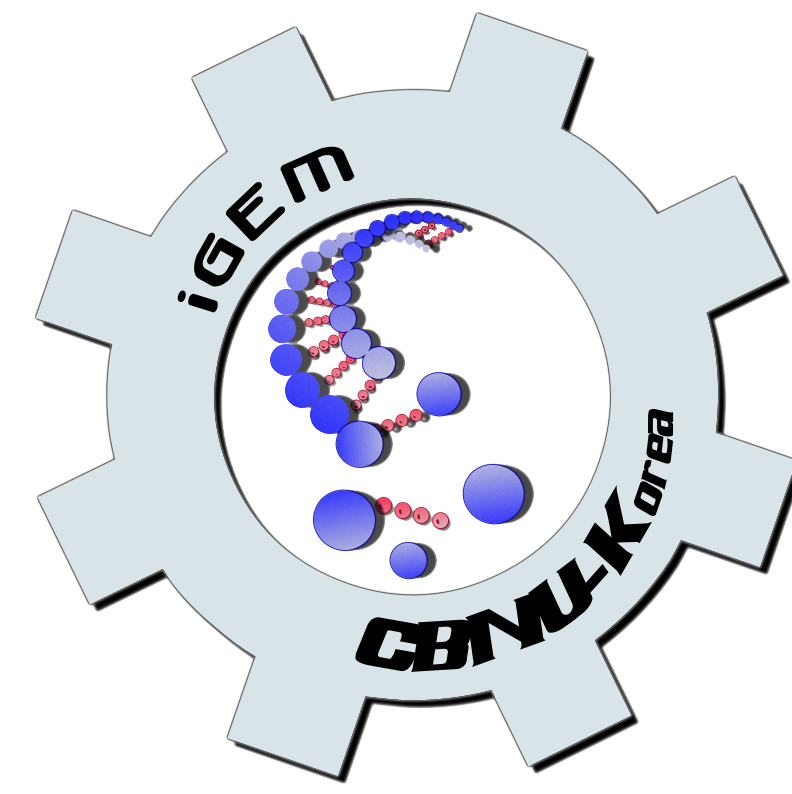Team:TUDelft
From 2009.igem.org
(→Saeed) |
|||
| Line 27: | Line 27: | ||
''KULeuven 2008 - Dr. Coli, the bacterial drug delivery system'' | ''KULeuven 2008 - Dr. Coli, the bacterial drug delivery system'' | ||
| - | + | In this project, the KU Leuven team presented the idea of using E.coli as a transporter of medication in such a way that it would be targeted at a specific location. Furthermore, the E.coli would react to the presence of foreign organisms and would express certain proteins to destroy them, followed by it's self destruction after the area would be completely cured. It is important to emphasise that the project was not intended to produce a specific medication to a specific disease, but merely as a way to show that the general concept of curing a disease in a direct manner is possible. | |
'''Sriram''' | '''Sriram''' | ||
Revision as of 13:00, 19 April 2009
This is the first template of the TU Delft 2009 iGEM team wiki! On this page information about the project and its progress can be found.
The Team
This is the second year the TU Delft participates in the iGEM competition. The group consists of : (list of members to come here)
a number of instructors and a lot of advisors, willing to help out and think with us when this is necessary. An overview of the people involved and our competences can be found on the team page.
The Meetings
April 7th, 2009
Minutes, action points
Orr
Bologna 2008 - Ecoli.PROM: an Erasable and Programmable Genetic Memory with E. coli The Bologna team created here a genetic memory for E.coli that would switch between two states as a response to a certain signal (a UVc signal would inhibit Lex A (an inhibitor of LacI), thus allowing the production of LacI, whereas an IPTG signal would inhibit LacI and allow the production of TetR).
Cambridge 2008 - iBrain: Foundations for an Artificial Nervous System using Self-Organizing Electrical Patterning In this project, the Cambridge team decided to do three simultaneous sub-projects: one involved the creation of an artificial neurological system for E.coli (using potassium channels to transfer the ion and thus allow for a gradient of the ions), the second involved generating Turing patterns in order to integrate two signalling systems into Bacillus subtilis, and the third part involved generating standardized tools and techniques for B. subtilis. We learned from this project an important lesson: quality is definitely more important than quantity, and there is no point of doing many simultaneous experiments if we cannot finish any one of them properly.
KULeuven 2008 - Dr. Coli, the bacterial drug delivery system In this project, the KU Leuven team presented the idea of using E.coli as a transporter of medication in such a way that it would be targeted at a specific location. Furthermore, the E.coli would react to the presence of foreign organisms and would express certain proteins to destroy them, followed by it's self destruction after the area would be completely cured. It is important to emphasise that the project was not intended to produce a specific medication to a specific disease, but merely as a way to show that the general concept of curing a disease in a direct manner is possible.
Sriram
Illinois - Biomolecular fluorescence biosensor system: cell bases biosensor system
Ljubljana, Slovenia - Virotrap - A synthetic biology approach against HIV
Ljubljana, Slovenia - Engineered Human cells - say no to sepsis
Tim Weenink
ESBS Strasbourg - Binary generation counting in Yeast
University of Ottowa - Puslegenerator in Yeast
Calgary Wetware - Quorum coupled bacteriocin release (engineering a champion)
17th April 2009
Tim Vos
MIT - Biogurt: A Sustainable and Savory Drug Delivery System
Groningen - Conway’s Game of Life in real life
UFreiburg - Modular Synthetic Receptor System
Daniel
Harvard - bactricity
ETH Zurich - Random walks towards the minimal genome
Slovenia - Immunobricks
Saeed
Caltech - Engenering multi-functional probiotic bacteria
Heidelberg - Ecolicense to kill
Valencia - Hot Yeast
| You can write a background of your team here. Give us a background of your team, the members, etc. Or tell us more about something of your choosing.
Welcome to the Wiki of the TU Delft team for iGEM 2009. The site is still under construction, but as soon as it is finished, we hope to keep with the standards of the TU Delft team last year. | |
|
Tell us more about your project. Give us background. Use this is the abstract of your project. Be descriptive but concise (1-2 paragraphs) With our 7 participants and 4 instructors, we are enthusiastic to start working on our project (whatever it may be). | |
| Team Example |
| Home | The Team | The Project | Parts Submitted to the Registry | Modeling | Notebook |
|---|
(Or you can choose different headings. But you must have a team page, a project page, and a notebook page.)
 "
"

